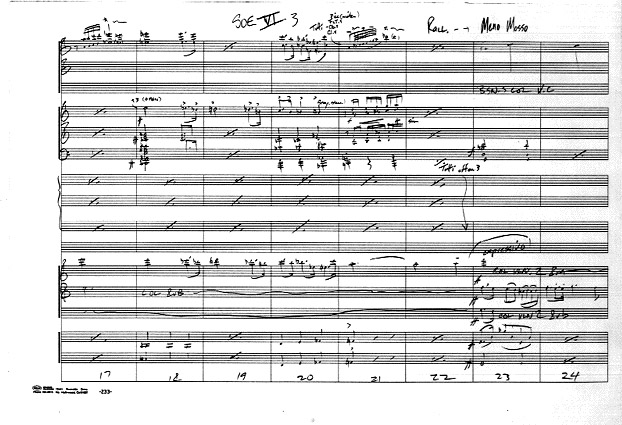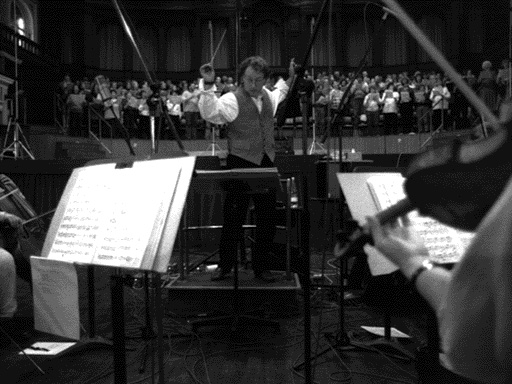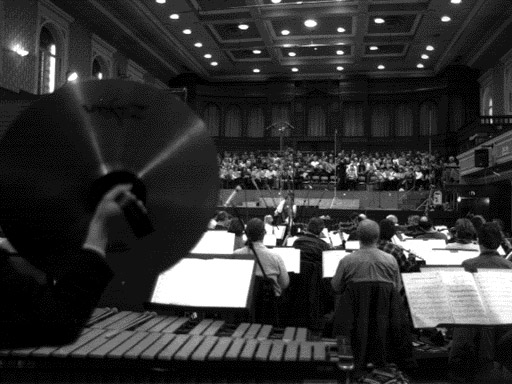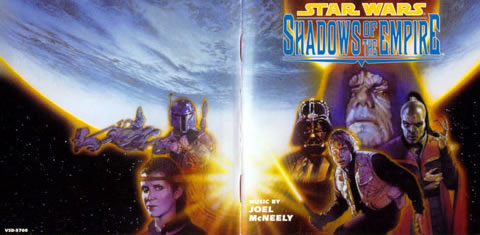The Shadows of the Empire soundtrack, a musical work by Emmy Award winner Joel McNeely, drew its inspiration from Steve Perry's 1996 novel of the same title. This score, differing from typical film scores, is rooted in a literary work, similar to classical program music.
Rather than attempting to replicate the style of John Williams, McNeely aimed to create a distinctive piece reflecting his own style; however, echoes of three well-known themes from the Star Wars films are present in tracks one ("Main Title" and a portion of "Carbon Freeze"), eight ("The Imperial March" and "Force Theme"), and ten ("The Imperial March").
This 51-minute soundtrack, under McNeely's direction, was brought to life by the Royal Scottish National Orchestra, consisting of 90 musicians, along with a 150-member chorus, during recording sessions in early 1996 in Glasgow, Scotland. Varèse Sarabande Records released the album on April 23, 1996. The CD also included exclusive CD-ROM features with behind-the-scenes material, in addition to the musical score.
In the early 1990s, Robert Townson from Varèse Sarabande Records collaborated with Lucasfilm to produce four soundtrack albums featuring music created for The Young Indiana Jones Chronicles. Around that period, he and Lucy Autrey Wilson of Lucasfilm explored the concept of an orchestral soundtrack inspired by Timothy Zahn's Thrawn Trilogy. While the idea did not materialize initially, the emergence of the Shadows of the Empire project presented an ideal opportunity for a Star Wars score based on a novel, leading them to revisit the concept.
Joel McNeely was Townson's primary choice for composer. McNeely's prior work included conducting several score re-recordings for Varèse Sarabande, composing the score for the film Radioland Murders, and scoring numerous episodes of Young Indiana Jones for Lucasfilm. McNeely initially declined the offer due to commitments to two other film projects, resulting in the temporary shelving of the project. However, when a two-week opening appeared in his schedule, he accepted the assignment to create the score.

The concept of a score derived from a literary work was influenced by classical program music from composers like Beethoven and Strauss, which Townson views as precursors to modern film scores. Townson and McNeely discussed the project, focusing on the storyline's mood, its grandeur, key themes, and the required compositions. He provided McNeely with Ralph McQuarrie's concept art of Coruscant for inspiration. McNeely referenced Mussorgsky's Pictures at an Exhibition as an example of musically representing visual art.
McNeely opted to utilize existing Star Wars music as thematic foundations rather than producing a "second-rate imitation of John Williams." His goal was to craft an "eclectic" piece that would narrate the characters' stories and events through music, similar to a film score. The absence of a film meant McNeely wasn't constrained by a temp track, sound effects, or film timings. He appreciated the freedom to envision scenarios and respond to them "without fear of fighting another element." This lack of restriction enabled McNeely to concentrate on specific elements for extended periods, emphasizing that "Every passage [of the score] represents some person, place or event in this story."
Ben Burtt, known for creating numerous alien languages for Star Wars, penned a poem titled "Dha Werda Verda" intended for choral performance. McNeely requested that Burtt "make the language Germanic with hard syllables, very harsh and guttural." McNeely then incorporated fragments of the poem, taken out of context, into his compositions.
Burtt connects the poem—whose discovery he associates with characters and events he developed for the Droids cartoon in the mid-1980s—to the ancient conflict between the Battalions of Zhell and the primitive ancestors of Coruscant, the Taungs. The poem recounts a volcanic eruption that interrupted the battle between these two groups, wiping out the Zhell and ultimately leading to the site becoming Imperial City millennia later.
While Burtt's original liner notes do not explicitly identify the language of the text, more recent Expanded Universe sources suggest that the words might be an ancient form of Mando'a.
The recording sessions for Shadows of the Empire took place over three days in Glasgow, Scotland, specifically on February 24 and 25, 1996. McNeely conducted the score, which was performed by the Royal Scottish National Orchestra and Chorus, consisting of a 90-piece orchestra and a 150-piece choir. Due to time constraints that prevented a return to the United States for mastering, the score was mastered at Abbey Road Studios in London, England.
Prior to the release of the Shadows album, selections from the score were performed in concert by the Royal Scottish National Orchestra at Scotland's Royal Concert Hall in Glasgow on March 3, 1996. McNeely conducted the concert, which also included pieces from scores such as Vertigo, The Bride of Frankenstein, and Spartacus. After an encore, McNeely reportedly received five standing ovations.
Varèse Sarabande Records released the Shadows of the Empire album on April 23, 1996, in both audio cassette and compact disc formats. The CD version included exclusive CD-ROM features in addition to the score. The album's cover featured the same Drew Struzan artwork as the novel. The album also included liner notes with brief plot summaries and commentary for each track by Townson and McNeely, as well as the text of Dha Werda Verda and notes from Ben Burtt.
Later, selections from the Shadows score were incorporated into the Shadows of the Empire video game and the audiobook, alongside Williams' music from the original trilogy.
This track commences with John Williams' iconic "Main Title." Following a brief segment by McNeely that recurs later in the score, another Williams composition—"Carbon Freeze" from The Empire Strikes Back—is featured, symbolizing Leia Organa's nightmare recalling the moment her lover, Han Solo, was frozen in carbonite. After the inclusion of "The Imperial March," the cue concludes with a short coda by McNeely as Organa awakens from the nightmare.
Dash Rendar provides Lando Calrissian with the coordinates of Boba Fett's Slave I (and, consequently, the location of the frozen Han Solo): Gall, a moon situated in the Outer Rim Territories. During the Battle of Gall, Luke Skywalker and Rogue Squadron confront the Empire while Calrissian, Organa, Chewbacca, and Dash Rendar pursue Fett. This eight-minute battle cue begins at a measured pace and escalates as the action unfolds. Midway through, the piece slows down to introduce the "Alliance Battle Hymn," a theme that resurfaces towards the score's conclusion. Subsequently, the action music resumes.
The piece opens with a depiction of the approach to Imperial Center from space, musically conveying the "spectacular sight" of the planet. Rising chords represent the seemingly endless height of the skyscrapers. Following a welcoming fanfare played by the brass section, a "reflective" theme explores Monument Plaza. After the main theme for Imperial City is presented, the track concludes with a reprise of the rising chords from earlier in the piece.
On Tatooine, a swoop gang attacks Luke Skywalker at Ben Kenobi's hut. Skywalker seizes control of one of the swoops and proceeds to Beggar's Canyon. As Skywalker's pursuit by the gang nears its end, the piece concludes with a brief statement of Dash Rendar's Theme when Rendar rescues Skywalker.
This piece mirrors the "quirky environment" encountered by Organa and Chewbacca as they navigate Coruscant's Southern Underground. Situated deep beneath the planet's surface, this area of Coruscant never experiences sunlight. It is a foul-smelling, moldy area populated by beggars and other undesirable individuals. Organa and Chewbacca must traverse this area to rendezvous with Spero, a Ho'Din who will provide them with information regarding Black Sun.
Prince Xizor, the Falleen leader of the criminal syndicate Black Sun, poses a significant threat to both the Rebel Alliance and the Empire. Similar to the "Imperial City" piece, this track is intended to guide listeners through Xizor's Palace, commencing deep below with echoes from Xizor's prisons. Representing both the horrors of his crimes and his refined taste, the piece juxtaposes "ugly motifs" with classical segments.

The actual theme for Xizor emerges in the final two minutes of the track. According to the composer: "When I first read the book, my initial impression of Xizor was—ethnic. Something Middle Eastern, slightly primitive in style, but with a real seductive side, a lot of drums." McNeely employs the main melody for the reptilian Xizor, followed by a section led by strings to represent Xizor's romantic aspect, but ultimately concludes the piece with the "angry" ethnic melody, asserting that "the primal ultimately wins out."
"Xizor's Theme" was subsequently featured on Varèse's In Session: A Film Music Celebration and Varèse Sarabande: A 25th Anniversary Celebration compilation albums.
This waltz draws inspiration from the scene in which Princess Leia Organa visits Prince Xizor's Palace to seek assistance from Black Sun. The piece commences with a motif symbolizing the emission of Xizor's Falleen pheromones, which begin to seduce Organa. As their passion intensifies, the speed and energy of the waltz increase. Following a repetition of the pheromone motif, the piece takes a more lush and romantic turn as Organa ceases her resistance. A final appearance of the pheromone motif is interrupted by a musical representation of Chewbacca pounding on the door.
In this piece, both Xizor's Theme and Darth Vader's Theme (The Imperial March) are played more softly than usual, as the respective characters experience moments of reflection. Xizor initially contemplates Organa's rejection of him, finding himself even more drawn to her. Subsequently, Vader attempts to contact his son Skywalker through the Force, and McNeely employs the choir "as a very quiet, reflective element about a man having a moment of introspection at a pivotal point in his life." Following a bold statement of Williams' "Force Theme," the Imperial March returns as Vader learns about the history of Xizor's family.
In this scene, Skywalker, Chewbacca, Rendar, Calrissian, and Benedict Vidkun must navigate sewage tunnels to infiltrate Xizor's Palace and rescue Organa. McNeely describes this composition as the "musical equivalent of walking through sludge of unimaginable olfactory repugnance."
In what Robert Townson termed the "big finale cue," McNeely utilizes the choir "as a power element for the climactic destruction of Xizor's palace as the orchestra plays with great fury and bombast." This finale piece, lasting over ten minutes, commences with a choral presentation of Dha Werda Verda as Skywalker, Calrissian, Rendar, and Chewbacca break into Xizor's palace to locate Organa. Once she is discovered, the music begins to build until they encounter Xizor, at which point Calrissian detonates a thermal detonator. The group then escapes the doomed palace and engages in a battle against Xizor's forces and the Imperials, ultimately prevailing to fight the Empire another day.
In addition to the use of Xizor's Theme, this track features multiple instances of the Imperial March, a detail curiously omitted on the album case's rear cover. After nine minutes, the Alliance Battle Hymn reappears, followed by a "triumphant passage signaling the end of another great adventure."
The enhanced CD includes several features, such as an introduction providing an overview of the Shadows of the Empire multimedia project, biographies of Steve Perry, Jon Knoles, Doug Chiang, John Wagner, and Michael Butkus, galleries and biographies of artists Ralph McQuarrie, Drew Struzan, Hugh Fleming, and Kilian Plunkett, information about Joel McNeely, Ben Burtt, the Royal Scottish National Orchestra and Chorus, Robert Townson, Matthew Joseph Peak, and Varèse Sarabande Records, and details about the book, the game, the comic series, and the toys inspired by the characters. The music section also features the complete "Music of the Shadows" chapter from The Secrets of Star Wars: Shadows of the Empire, recording session photographs by Matthew Joseph Peak, and other text also included in the album's liner notes. The booklet's liner notes provide brief plot summaries for each track, corresponding to sections from the novel. McNeely wrote, "Unlike with film music, I have been allowed to let my imagination run free with the images, characters and events from this story. I have also had the luxury to loiter as long as I like with a character or scene. Every passage represents some person, place or event in this story."
- ASIN B0000014YD; April 23, 1996, Varèse Sarabande, Enhanced CD
- ASIN B0000014YE; April 23, 1996, Varèse Sarabande, Audio cassette
- PC Video Game ; 1997, soundtrack from the game by John Williams included on the CD when put in computer.
- " Scoring the Trilogy " — Star Wars Insider 26
- " Lucasfilm's Latest: Star Wars: Shadows of the Empire Update " — Star Wars Insider 28
- " Scoring the Trilogy " — Star Wars Insider 28
- " Around the Galaxy " — Star Wars Galaxy Magazine 6
- " Lucasfilm's Latest " — Star Wars Insider 29
- " Scoring the Trilogy: Shadows of the Empire " — Star Wars Insider 29
- " Into the Shadows: A Profile of Author Steve Perry " — Star Wars Insider 29
- " Around the Galaxy " — Star Wars Galaxy Magazine 7
- " Shadows on the Shelves " — Star Wars Galaxy Magazine 7
- " Star FX: Anatomy of a Thriller " — Star Wars Galaxy Magazine 7
- The Secrets of Star Wars: Shadows of the Empire
- " Galactic Bazaar: Collectors' Comlink " — Star Wars Galaxy Magazine 9
- " Cyber Notes: Working With A Net " — Star Wars Galaxy Magazine 9
- Star Wars: Shadows of the Empire Limited Collector's Edition
- " Collectors' Comlink " — Star Wars Galaxy Collector 3
- Shadows of the Empire on Wikipedia
- Star Wars music on Wikipedia
- Official Star Wars music site
- Cargo Bay entry in the StarWars.com Cargo Bay (content now obsolete; backup link)
- CD Liner with additional Information


